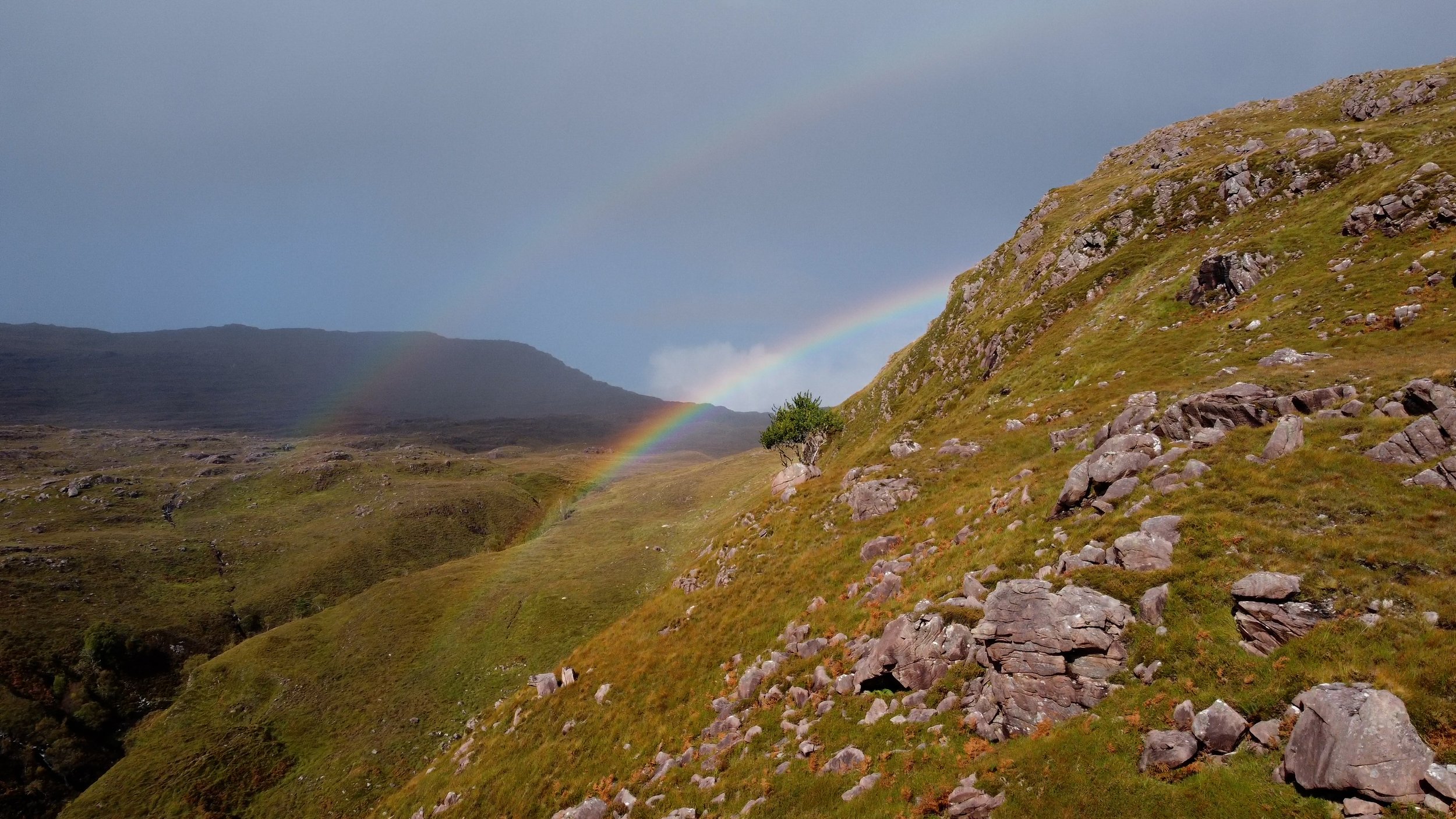Searching for bird cherry
When we think of temperate rainforest, the trees that come to mind are often oak, birch, ash and hazel. But the native woodlands of the past likely had a bigger blend of species than we see today.
Why are certain tree species more common in Scotland’s rainforest?
Some trees have become rarer in the rainforest today because of deer, which are at unnaturally high population levels in Scotland. Deer are always hungry, and they tend to head straight for the ‘tastiest’ trees in the woodland buffet.
Species like birch are bitter and unpalatable, and that puts the deer off eating them. That gives the birch trees a higher chance of surviving those precarious months and years as saplings, meaning they might grow into adult trees that can reproduce.
Aspen is apparently delicious (if you’re a deer) so unless they seed in inaccessible places, they’re usually nibbled out before they can get very tall. That’s one of the reasons why you’ll see so many birch trees growing in the rainforest, but very few aspens (you can find out more about birch trees in our previous blog).
But trees aren’t just affected by deer. Some species have been influenced by human activities through the years as well. Oak in particular was actively encouraged in many rainforest woodlands – almost farmed – with other trees weeded out. This was so that the oaks could be used for making charcoal, or in the tanning industry to make leather. They were often pollarded (the stems cut off at a certain height) for this, meaning that not only did these industries impact the species of trees we see today, but even the shape of those trees!
‘Hedgerow’ trees missing from the rainforest
Some woodlands in the rainforest zone today are missing what we might think of as hedgerow species, like hawthorn, blackthorn and crab apple. These aren’t just shrubs, but can actually grow into impressive trees in their own right, if given the right space and conditions.
At Glencripesdale nature reserve on Morvern, RSPB Scotland staff are trying to collect fruits and seeds from the remaining few examples of these trees, so that they can grow new saplings in protected locations. These will then be planted out in the woodland to provide an extra layer to the already rich biodiversity of the rainforest. One tree they’ve been searching for in particular this summer is the bird cherry.
Bird cherry
We have two native species of cherry trees that grow in the wild in the UK. The wild cherry itself is more commonly found in the south of Scotland, or in more sheltered, fertile areas. But in the wetter, wilder west, you’re more likely to see bird cherry.
These small trees are very hardy and can cope with the worst of the Scottish winter. In spring, they’re covered in beautiful white flowers, which transform into black fruits by autumn. These aren’t fruits you can forage (which is perhaps why people in the past didn’t spread these trees) but they are important as a food source for birds and lots of mammals.
Only a small, isolated population of bird cherries has survived at Glencripesdale, but RSPB staff have been out this autumn collecting fruit from them – though only 10% or so from each tree to ensure there’s plenty left for wildlife! The fruits are then processed by having the flesh removed to reveal the seeds within, then the seeds are left in gritty sand over the winter. Once they’re showing the first signs of germination, they’ll be planted in the RSPB’s tree nursery next spring.
With luck, in 20 or 30 years, these woodlands will be full of their blossom in spring once more, with all the buzzing life that comes with it.





